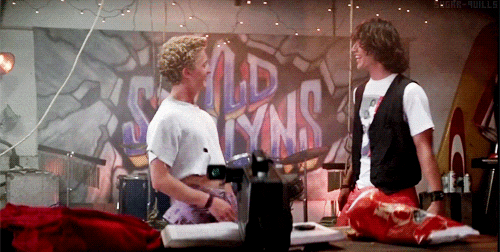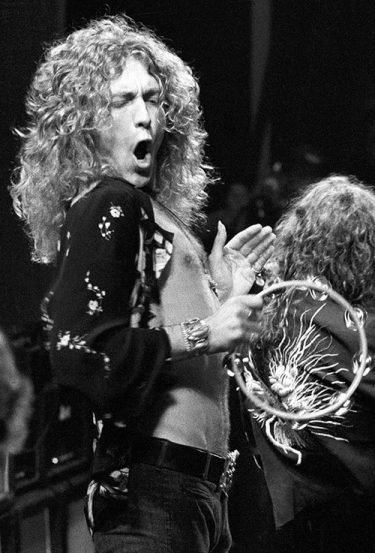
The Atlantic on the death of Eddie Van Halen: “How do we categorize his music? Soft hard rock. Light heavy metal… In the end, they were crossover artists. Beloved of girls, beloved of boys, with Eddie always, always taking it beyond. The far brought near. Excess without vulgarity. America, don’t forget how beautiful you are; you created the conditions for Eddie Van Halen.”

Two weeks after lockdown began this spring, I went to Guitar Center to pickup some gear for my new album. The place was packed. “It’s been Black Friday every day for the past two weeks,” one clerk told me.
Turns out, the sudden spike in homemade music has remained ever since. Gibson, Fender, and others have already broken record sales this year. One guitar maker sold in June and July what they expected to sell for the entire year!
According to the New York Times, “In a narrow sense, the surge made sense. Prospective players who had never quite found the time to take up an instrument suddenly had little excuse not to. As James Curleigh, the chief executive of Gibson Brands, put it: “In a world of digital acceleration, time is always your enemy. All of a sudden time became your friend.””
That was certainly the case for me. My work slowed, and I didn’t watch any Netflix or read any books during the first five months of quarantine. Instead, I spent all of my spare time making music, which resulted in my debut record and forming my first band since college.
It’s amazing what you can accomplish when time slows, whether by design or by pandemic.
 With little else to do in quarantine, I’ve been making a lot of music over the last four months. I’ve recorded an album’s worth of original material, which I hope to release this summer, and started rehearsing with a live cover band—a rock quartet comprised of me singing, Ashton Bennett melting faces on guitar, Caleb Browning rocking a ridiculous amount of bass and backing vocals, and Jayce Ward not missing a beat on drums. (video evidence here)
With little else to do in quarantine, I’ve been making a lot of music over the last four months. I’ve recorded an album’s worth of original material, which I hope to release this summer, and started rehearsing with a live cover band—a rock quartet comprised of me singing, Ashton Bennett melting faces on guitar, Caleb Browning rocking a ridiculous amount of bass and backing vocals, and Jayce Ward not missing a beat on drums. (video evidence here)
Though both experiences, I’ve learned two important lessons:
- I love making music. I learned guitar and started singing in middle school and played in several bands through college. But with notable exception to listening to lots of new music, I largely quit making it after marrying, having children, and taking up writing. Quarantine changed all of that for the better. It’s a wonderful feeling to make harmonious noise while the world slowly sorts itself out.
- Tambourines are in over 50% of popular music. While recording, studying, and performing more live music than ever before, I’ve been immediately struck by the amount of tambourines used in recorded music (at least the kind of pop and rock that I mostly listen to), and how much better they make live music sound. I realize tambourines are the ugly stepchild of music, but let me explain why they’re used more than even synthesizers when it comes to making popular music.
Continue reading…
[youtube]https://www.youtube.com/watch?v=ZKxNCNtMd0U[/youtube]
I learned to play guitar sometime in the spring of 1994. I did it in a single day. Sort of.
Although I knew how to mangle the open chords for A, C, D, E, and G in the months leading up to that fateful day, the instrument didn’t click with me until my brother and his friend Dylan Denny demonstrated how to play bar chords the night before. “You mean I just keep the same finger formation and slide up and down the neck to play any chord I like, even flats!?” I enthusiastically asked. “Yup,” they replied. “That’s the beautify of power chords.”
I was so excited by this revelation — this power, if you will — that I called in sick the next day (i.e. I faked a cough and my mom let me stay home from school).
Armed with this new “life hack,” I learned to play Green Day’s entire breakthrough album by ear that day. I was so elated, I didn’t even break for lunch, let alone breakfast. I just played, played, and played, stopping the CD only to find the right chord. I even learned a few of the album’s basic “fills,” or poor man’s solos, as I call them.
Upon returning from school, my brother and friend were impressed with my progress. It’s not every day a rhythm guitarist is born. From that day forward, I wanted to “play rhythm” forever.
That all changed on a Wednesday night 13 years later. Continue reading…
[youtube]http://www.youtube.com/watch?v=d49m6G9vOrI[/youtube]
Yeah, c’mon. More here.



 With little else to do in quarantine, I’ve been making a lot of music over the last four months. I’ve recorded an album’s worth of original material, which I hope to release this summer, and started rehearsing with a live cover band—a rock quartet comprised of me singing, Ashton Bennett melting faces on guitar, Caleb Browning rocking a ridiculous amount of bass and backing vocals, and Jayce Ward not missing a beat on drums. (
With little else to do in quarantine, I’ve been making a lot of music over the last four months. I’ve recorded an album’s worth of original material, which I hope to release this summer, and started rehearsing with a live cover band—a rock quartet comprised of me singing, Ashton Bennett melting faces on guitar, Caleb Browning rocking a ridiculous amount of bass and backing vocals, and Jayce Ward not missing a beat on drums. (